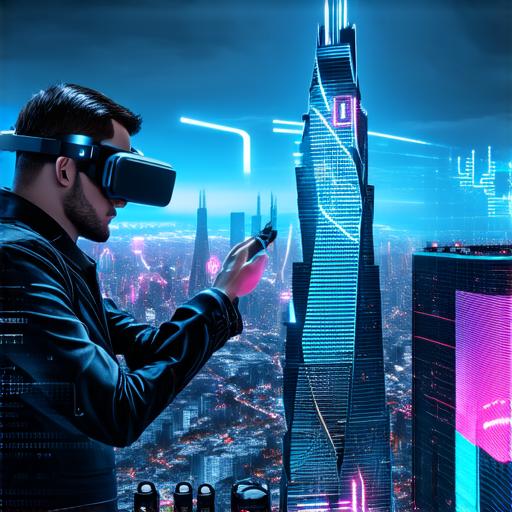
What is the meaning of virtual reality?
Virtual reality has revolutionized the way we interact with technology and has opened up new possibilities for education, healthcare, entertainment, and more. In this article, we will explore the meaning of virtual reality, its history, and the science behind it, as well as provide some real-life examples of how it’s being used in various industries.
What is Virtual Reality?
Virtual reality can be defined as a technology that creates an immersive, simulated environment that mimics the real world or a completely fabricated one. The goal of VR is to create a sense of presence in the virtual world, making it feel as if you are really there, rather than just looking at a screen. Virtual reality works by using sensors and tracking devices to monitor your movements and translate them into actions within the virtual environment. This allows you to interact with objects and other people in the virtual world, and even manipulate them using specialized controllers or gloves.
History of Virtual Reality
The concept of virtual reality dates back to the 1960s, when computer scientists first began experimenting with ways to create immersive environments that could be experienced through specialized devices. However, it wasn’t until the 1990s that VR technology became more accessible and affordable, thanks in large part to advancements in computer hardware and software.
Since then, virtual reality has been used in a variety of applications, from gaming and entertainment to education and healthcare. In recent years, there has been a surge in interest in virtual reality as a tool for training employees in industries such as manufacturing, construction, and aviation.
The Science Behind Virtual Reality
Virtual reality works by stimulating the senses, particularly sight and sound, to create a sense of immersion in the virtual environment. When you put on a VR headset, for example, it blocks out the real world and replaces it with a digital one. The headset uses high-resolution displays to simulate the visual environment around you, while specialized sensors track your movements and translate them into actions within the virtual world.
In addition to sight and sound, virtual reality can also use other senses such as touch and smell to create a more immersive experience. For example, some VR devices include haptic feedback that allows you to feel sensations in your hands or body as if they were touching something in the real world. Virtual reality also uses 3D audio technology to simulate the sounds of the virtual environment, further enhancing the immersion experience.
Real-Life Examples of Virtual Reality
Virtual reality is being used in a variety of industries and applications, from gaming and entertainment to education and healthcare. Here are a few examples:
-
Gaming: Virtual reality has revolutionized the gaming industry, allowing players to fully immerse themselves in a game and interact with it in ways that were previously impossible. VR games can be played on a variety of devices, including headsets, controllers, and even smartphones. For example, VR games like “Beat Saber” allow players to wield virtual light sabers to slash through incoming blocks, while “Job Simulator” allows players to experience various jobs in a virtual world.
-
Education: Virtual reality is being used to create immersive learning experiences that allow students to explore complex concepts and ideas in a more interactive and engaging way. For example, VR simulations can be used to teach anatomy by allowing students to “dissect” a virtual body, or to teach history by allowing them to experience events as they happened. Virtual reality is also being used to teach language skills, by simulating real-life situations where learners have to practice their language skills in a safe and controlled environment.
-
Healthcare: Virtual reality is being used in healthcare to treat a variety of conditions, including anxiety and phobias, post-traumatic stress disorder (PTSD), and chronic pain. For example, VR simulations can be used to expose patients to feared objects or situations, helping them to overcome their fears in a safe and controlled environment. Virtual reality is also being used to treat PTSD by exposing patients to traumatic events in a controlled environment, helping them to process and recover from the trauma.
-
Training: Virtual reality is being used to train employees in a variety of industries, from manufacturing and construction to aviation and military.



